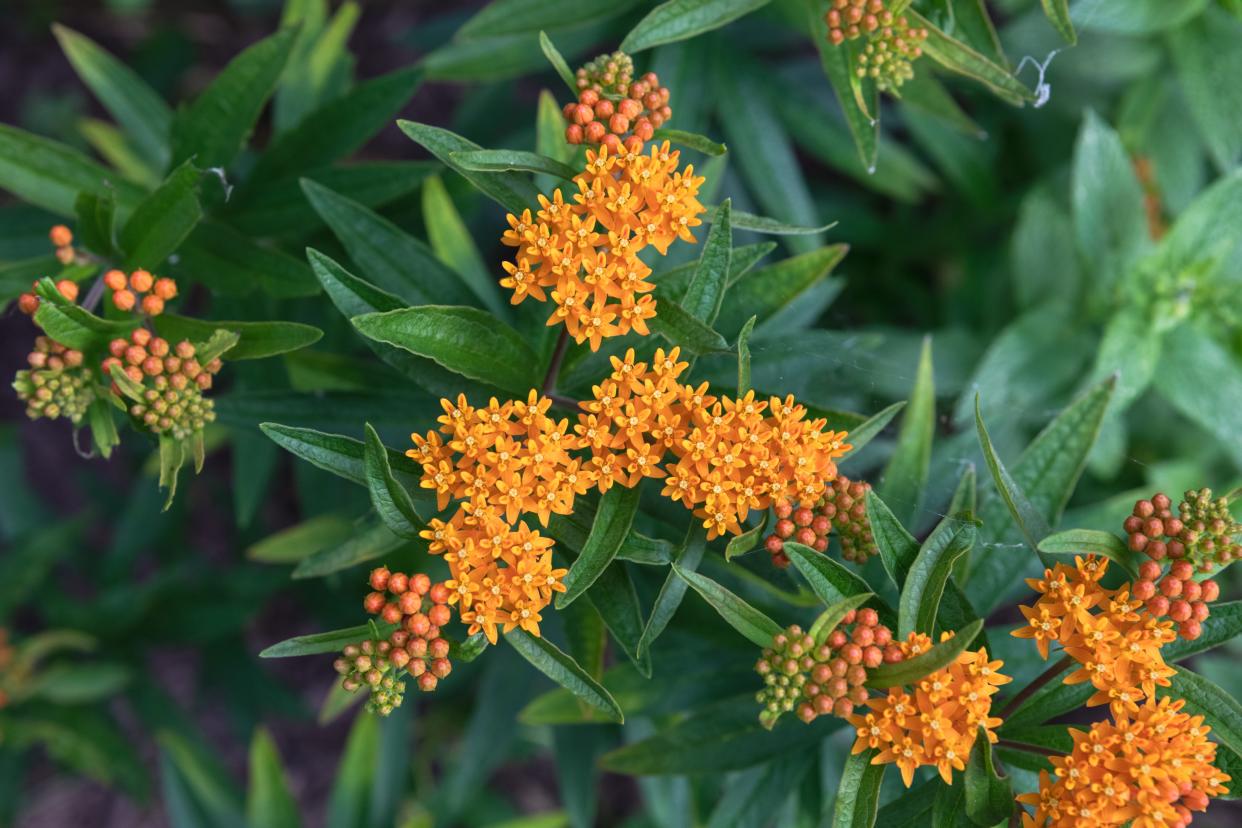CHARLES REYNOLDS: Bring on the butterflies with milkweed

Butterfly milkweed — aka orange milkplant and butterfly weed — is one of a couple dozen milkweeds native to Florida, and the most popular with gardeners. The flowers of this species (Asclepias tuberosa) are orange or red-orange and clustered on stem tips from spring into autumn. Those stems grow about 2 feet long on bright, sandy sites where the blossoms of this wildflower attract butterflies and hummingbirds. Plants are evergreen in Central Florida during mild winters. Propagate butterfly milkweed by division and seeds and with root cuttings. Available locally and online.
PLENTY OF SHRUBS MAKE GREAT SMALL TREES
It was a hot, sunny day in Savannah, Georgia, when I last visited the city’s Bonaventure Cemetery. While there, I noticed an older woman sitting on a folding stool in the shade of a massive oakleaf hydrangea. I’d always regarded this native plant (H. quercifolia) as a shrub, but it was functioning just fine as a miniature shade tree. Indeed, many woody plants we maintain as shrubs — often with great difficulty due to their vigor — can make excellent small trees in our gardens.
Obviously, plants with spines or extremely floppy branches are poor candidates. But numerous large-growing species can — through judicious pruning — be utilized. What do I mean by large growing? Let’s say most shrubs that grow at 10 to 15 feet tall are fair game. Among them would be oleander, Japanese privet, yellow elder, angel’s trumpet, chaste tree, sweet viburnum, Barbados cherry, peregrina, Anderson Crepe hibiscus and natives such as wax myrtle, marlberry and varnish leaf.
A FRUSTRATING FRUIT TREE
The imbe (Garcinia livingstonei) is — as you might have guessed — named after the famed African explorer Dr. David Livingstone. This East African tree has several striking attributes: It’s drought tolerant once established, withstands temperatures down to the mid-20s and bears 2-inch yellow or orange fruit in summer. But cultivating the imbe for its fruit isn’t easy. They’re propagated only by seed, grow slowly and take years to mature. But the biggest stumbling block gardeners face is that these 10-to-20-foot trees are dioecious, which means both male and female specimens must be present for fruiting to occur. There are, however, nurseries that claim they have hermaphroditic imbes — plants with both male and female flowers.
TAKE A SHINE TO MIRROR LEAF SHRUB
Like many plant lovers, I’ve never seen the appeal of doodads and shiny objects like gazing balls and whirligigs. But I do love the mirror leaf viburnum (V. awabuki). Growing 10 to 15 feet tall and 9 feet across, this East Asian shrub features 3-to-7-inch leaves so incredibly glossy that I always stop to admire them. In addition to that remarkable foliage, mirror leaf grows rapidly in sun or light shade and bears clusters of lightly fragrant white flowers in spring. They’re followed in autumn by berry-like fruit that ripen to black. Propagate with warm-season cuttings.
This article originally appeared on The Ledger: WEEKEND PLANTINGS

